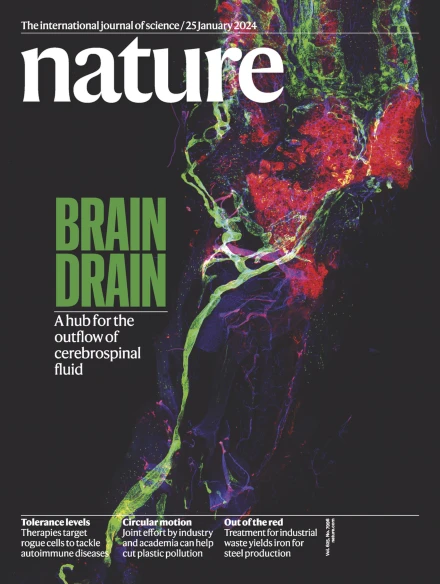Multi-zonal liver organoids from human pluripotent stem cells
IF 50.5
1区 综合性期刊
Q1 MULTIDISCIPLINARY SCIENCES
引用次数: 0
Abstract
Distinct hepatocyte subpopulations are spatially segregated along the portal–central axis and are critical to understanding metabolic homeostasis and injury in the liver1. Although several bioactive molecules, including ascorbate and bilirubin, have been described as having a role in directing zonal fates, zonal liver architecture has not yet been replicated in vitro2,3. Here, to evaluate hepatic zonal polarity, we developed a self-assembling zone-specific liver organoid by co-culturing ascorbate- and bilirubin-enriched hepatic progenitors derived from human induced pluripotent stem cells. We found that preconditioned hepatocyte-like cells exhibited zone-specific functions associated with the urea cycle, glutathione synthesis and glutamate synthesis. Single-nucleus RNA-sequencing analysis of these zonally patterned organoids identifies a hepatoblast differentiation trajectory that dictates periportal, interzonal and pericentral human hepatocytes. Epigenetic and transcriptomic analysis showed that zonal identity is orchestrated by ascorbate- or bilirubin-dependent binding of EP300 to TET1 or HIF1α. Transplantation of the self-assembled zonally patterned human organoids improved survival of immunodeficient rats who underwent bile duct ligation by ameliorating the hyperammonaemia and hyperbilirubinaemia. Overall, this multi-zonal organoid system serves as an in vitro human model to better recapitulate hepatic architecture relevant to liver development and disease. Liver organoids derived from human induced pluripotent stem cells populations grown with ascorbate and bilirubin can be used to recapitulate differential zonal functions of human hepatocytes and for transplantation in animal models of liver dysfunction.

人多能干细胞多区肝类器官
不同的肝细胞亚群沿着门脉-中轴线在空间上分离,这对理解肝脏的代谢稳态和损伤至关重要。尽管一些生物活性分子,包括抗坏血酸和胆红素,已经被描述为在指导区性命运中起作用,但区性肝脏结构尚未在体外复制2,3。在这里,为了评估肝脏的区向极性,我们通过共培养来自人诱导多能干细胞的富含抗坏血酸和胆红素的肝祖细胞,开发了一种自组装的区向特异性肝类器官。我们发现预处理肝细胞样细胞表现出与尿素循环、谷胱甘肽合成和谷氨酸合成相关的区域特异性功能。单核rna测序分析这些带状模式的类肝细胞确定了肝母细胞分化轨迹,决定了门静脉周围,带间和中心周围的人肝细胞。表观遗传学和转录组学分析表明,区域特性是由抗坏血酸或胆红素依赖的EP300与TET1或HIF1α结合而协调的。自组装带状图案人类器官移植可改善高氨血症和高胆红素血症,提高胆管结扎后免疫缺陷大鼠的存活率。总的来说,这个多区域类器官系统作为一个体外人类模型,可以更好地概括与肝脏发育和疾病相关的肝脏结构。
本文章由计算机程序翻译,如有差异,请以英文原文为准。
求助全文
约1分钟内获得全文
求助全文
来源期刊

Nature
综合性期刊-综合性期刊
CiteScore
90.00
自引率
1.20%
发文量
3652
审稿时长
3 months
期刊介绍:
Nature is a prestigious international journal that publishes peer-reviewed research in various scientific and technological fields. The selection of articles is based on criteria such as originality, importance, interdisciplinary relevance, timeliness, accessibility, elegance, and surprising conclusions. In addition to showcasing significant scientific advances, Nature delivers rapid, authoritative, insightful news, and interpretation of current and upcoming trends impacting science, scientists, and the broader public. The journal serves a dual purpose: firstly, to promptly share noteworthy scientific advances and foster discussions among scientists, and secondly, to ensure the swift dissemination of scientific results globally, emphasizing their significance for knowledge, culture, and daily life.
 求助内容:
求助内容: 应助结果提醒方式:
应助结果提醒方式:


